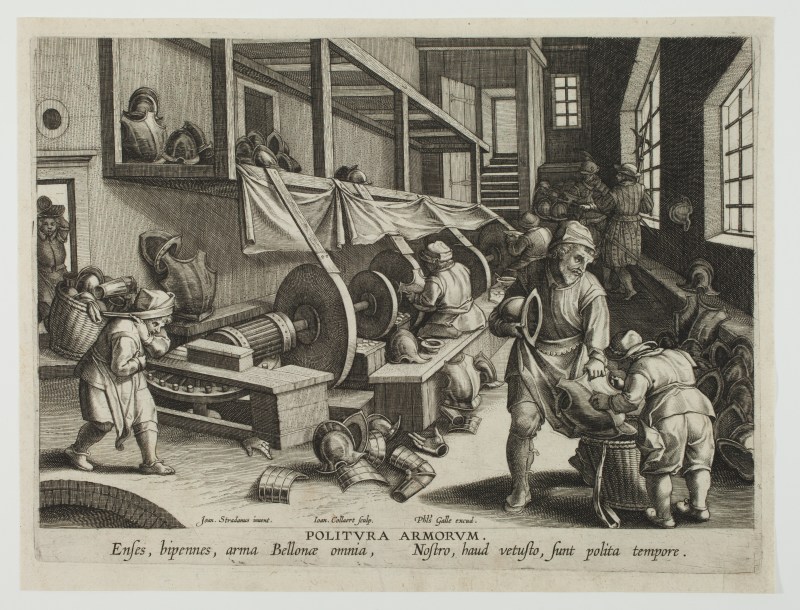Jan II COLLAERT: Politura Armorum [The Invention of the Polishing of Armour] - ca. 1588
Price: € 1600
Engraving after Johannes Stradanus, 200 x 275 mm. New Hollstein (Johannes Stradanus) 339, 1st state (of 4).
Plate no. 17 in the Nova Reperta series.
Very rare impression of the first state (of 4), before number 17 was added in the bottom left margin, and before the change in the publisher’s address.
Superb impression with strong contrasts, printed on laid watermarked paper (watermark: Gothic P). In very fine condition. Small margins (sheet: 219 x 285 mm).
The caption in Latin reads: Enses, bipennes, arma Bellonae omnia, Nostro, haud vetusto, sunt polita tempore: The swords, the double-edged axes, all the weapons of Bellona, are polished today, not in the past.
Two other plates in the Nova Reperta series are closely linked to war: Pulvis Pyrius [The Invention of Gunpowder] and Staphae, sive Stapedes [The Invention of Stirrups].
While gunpowder was a recent invention that revolutionised combat in the modern world, stirrups had been used for a long time, as had armour. The title and caption of Politura Armorum therefore clearly indicate the subject of the plate: the new practice of mechanised armour polishing. As in other engravings in the series, Johannes Stradanus introduces us to the workshop, where a whole world of apprentices, workers and foremen are busy around a large piece of machinery that is the centre of attention: “The eye is drawn to the gears, cogs and driveshafts of the polishing equipment as much as to the men using it. The rotary action of the grinding wheels appears to derive from a water wheel below the building, indicated by the brick arch in the lower left.” (David Cressy, Renaissance Invention, pp. 154-155).
Reference: Markey, Lia, ed. Renaissance invention: Stradanus’s Nova reperta. Evanston, Illinois: Northwestern University Press, 2020.




